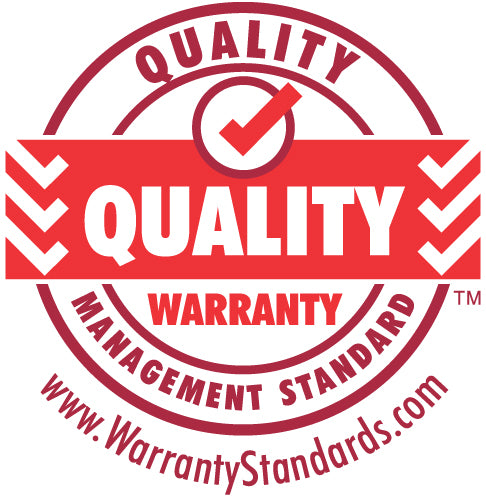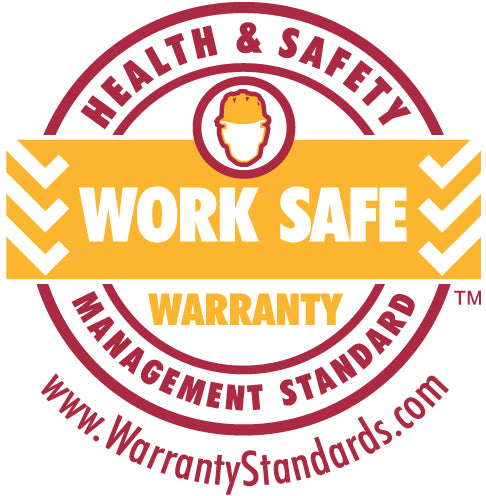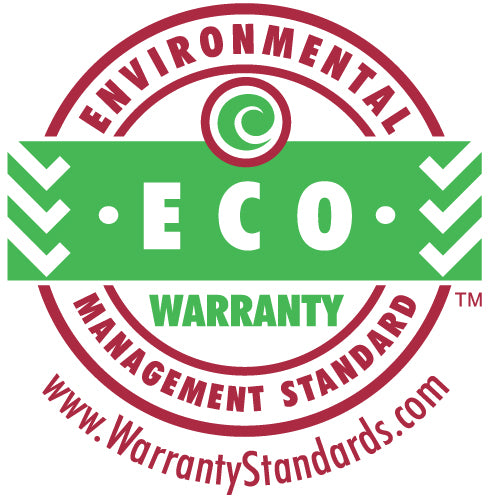Standards
ISO 9001 – Quality Management Standard
ISO 9001 is the most highly sought after certification worldwide, with over a million businesses ISO 9001 certified worldwide. It maintains a quality assurance system for every kind of organisation. Internally, ISO 9001 improves operational efficiency and improves customer satisfaction. ISO 9001 and its standards ensure that your business is practicing quality business management.
Attaining ISO 9001 certification makes your business more valuable. It assures that your organisation is committed to continuously improve its practices and customer satisfaction. It improves trade, as other organisations are more likely to engage in business and trade with other ISO 9001 certified companies. The credibility ISO 9001 provides attracts potential clients.
ISO 9001 has been implemented by more than 1 million organisations in more than 75 countries.
While there were earlier standards for quality management systems, ISO first released its 9001 standard in 1987 with updates in 1994, 2000, and the current version 2008.
The ISO 9001 quality management system standard was developed by an internationally selected standards committee to help all types of organisations (including commercial businesses, governments, non-profit organizations, etc.) adopt “good management practice”.
ISO 9001 is packed full of good management practices including that every good organisation:
- Should have a policy statement (a motherhood statement)
- Should have objectives
- Should have management plans to help meet its objectives
- Should have competent human resources
- Should have a written management system (or policies and procedures) and that the management system is approved, available, and up-to-date
- Should be customer focused and deliver customer satisfaction
- Should understand and meet customer requirements
- Should select suppliers based on sound criteria
- Should minimize its mistakes and non-conformances
- Should learn from its non-conformances and improve
The above list is not comprehensive, but hopefully you get the picture that even this short list represents good management practices.
The term quality simply put means meeting requirements. Therefore organisations that adopt a quality management system will enjoy such benefits as higher profits because the customer is satisfied, does not need to keep looking for other competing organisations, and the organisation may even be able to command a higher price.
There are other features of a quality management system that should also be considered. Organisations adopting an ISO 9001 quality management system are more likely:
- To make the less mistakes
- To minimize waste
- To gain greater control over its processes and therefore greater control over the results
- To continuously improve.
As with other standards such as: ISO 14001 Environmental Management Systems and AS/NZS 4801 the requirements of each standard are designed to integrate well between each other. This means that dual certification with another management system standard is simplified.
Working with Scarab Systems to gain certification to ISO 9001 is an important step to realising all of the above. Consider the following benefits:
- Cost: low price and high quality work. We don’t use templates
- Speed: up to 90 days from start to finish meaning you can stop procrastinating and start winning tenders
- Use of internal resources: use of internal resources is minimized by our lean approach to consulting meaning every moment you spend with us is more effective
- Quality: as a testament to our lean approach to consulting, all of our clients maintain certification to ISO standards without further need for a consultant. This alone can save $20,000-$80,000 per year for a small to medium-size business. The savings just keep coming.
Contact us and one of friendly Scarab consultants will be pleased to help you.
AS/NZS 4801 – Health & Safety Management Standard
Make health and safety of your employees a priority. Scarab Systems offers consultation to achieve ISO 45001:2018 Health & Safety Management Standard
AS/NZS 4801: provides a structured health and safety management system to your business or organisation. AS/NZS 4801 is the standard recognised in both Australia and New Zealand which can be applied to any workplace regardless of industry.
When your organisation is AS/NZS 4801:2001 Health & Safety Management Standard certified, it establishes your commitment to the health and welfare of your management and employees. Your certification provides credibility to external parties, including clients and stakeholders.
While there were earlier standards for OHS management systems, OHSAS first released its 18001 standard in 1999. The current version is OHSAS 18001:2007 and AS/NZS 4801:2001 Health & Safety Management Standard is the approved standard for Australia and New Zealand.
The AS/NZS 4801:2001 Health & Safety Management Standard was developed to help all types of organisations reduce, and where possible eliminate injury and illness.
AS/NZS 4801:2001 Health & Safety Management Standard systems primarily take a preventative approach to health and safety by:
- Identifying hazards applicable to the organisations operations
- determining the level of risk associated with the hazard
- Identifying controls including monitoring and measuring methods where appropriate to help minimize the identified risk.
- Implementing the controls and monitoring compliance with and effectiveness of the controls
- Taking corrective action in case of non-conformance, injury, or illness
- Learning from non-conformance and incidents and determining appropriate action to help the organization prevent further incidents.
Furthermore, there is a focus on:
- Consultation and communication
- Legal compliance
- Emergencies
- Training and competency.
As with ISO 9001 and ISO 14001, it is good management practice to develop written safety policies and procedures.
Written policies and procedures are effective for helping an organisation plan, communicate, check, enforce, and continually improve so that an organisation is better able ensure the health and safety of its employees and others affected by its operations.
If understood and implemented correctly, an AS/NZS 4801:2001 Health & Safety Management Standard should easily pay for itself financially. Consider the cost of injury, illness, legalities, negative press, and stress that come from poor health and safety, and consider the benefit that comes from taking a planned and informed approach to safety management
Achieving AS/NZS 4801:2001 Health & Safety Management Standard demonstrates to others your commitment to safety and can be effectively used in marketing campaigns.
As the world becomes more and more health & safety conscious (including employees), the smart choice is to implement a standards compliant ISO 4801 environmental Health & Safety Management Standard and enjoy the marketing benefits of recognition that comes from ISO 4801 certification.
ISO 14001 – Environmental Management Standard
ISO 14001 ensures your business is executing ethical environmental practices on a daily basis. It provides tools and tips to reduce your environmental impact and improve environmental performance.
ISO 14001 sets out a plan that a company or organisation can follow to ensure an environmentally conscious management system is being implemented. It can be utilised by any business or organisation regardless of industry, activity, or sector.
It assures your business is executing good environmental practices without compromising quality, performance, or service. Seeking an ISO 14001 certification gains the trust of customers and stakeholders that your business is running smoothly with environmentally conscious practices. It also reassures management and employees that your business is aware of future impact, securing the stability of your business.
ISO 14001 has been implemented by approximately 230,000 organisations in 159 countries.
While there were earlier standards for environmental management systems, ISO first released its 14001 standard in 1996. The current version is ISO 14001:2004.
The ISO 14001 Environmental Management Standard was developed by an internationally selected standards committee to help all types of organisations develop plans to minimize their impact on the environment, especially to minimise pollution.
ISO 14001 Environmental Management Systems primarily take a preventative approach to environmental impact and pollution by:
- Identifying aspects arising from the organisations operations that could impact the environment
- Determining the potential impact the aspects could have on the environment
- Identifying operational controls including monitoring and measuring methods where appropriate to help minimize the potential environmental impact
- Implementing the controls and monitoring compliance with and effectiveness of the controls
- Taking corrective action when an organisations has impacted the environment
- Learning from non-conformance and incidents and determining appropriate action to help the organisation prevent further incidents.
Furthermore, there is a focus on:
- Communication
- Legal compliance
- Emergencies
- Training and competency.
As with ISO 9001 and AS/NZS 4801, it is good management practice to develop written environmental policies and procedures. Written policies and procedures are effective for helping an organisation plan, communicate, check, enforce, and continually improve so that an organisation is better able to minimize its impact on the environment.
If understood and implemented correctly, an ISO 14001 environmental management system should quickly pay for itself both financially and environmentally. We all know that resources cost money, and by implementing systems to help identify and minimize resource use, a savvy organization should reap these benefits quickly.
As the world becomes more and more environmentally conscious (including employees), the smart choice is to implement a standards compliant ISO 14001 environmental management system and enjoy the marketing benefits of recognition that comes from ISO 14001 Certification.
HACCP Warranty Food Safety Management Standard / ISO 22000:2005 - Food Safety Management Standard

What is HACCP?
HACCP (pronounced "hass-ip") is the simple but effective way to ensure food safety. HACCP stands for the "Hazard Analysis and Critical Control Points" system. HACCP is a systematic approach to identifying and controlling hazards that could pose a threat to the safe production of food.HACCP has been in use in the food processing sector for some time but it is only since 1998 that the hospitality industry/sector and the retail sector have been obliged by law to implement a HACCP style food safety system in their business.
The original HACCP System
The first ever HACCP system was developed by the Pillsbury Company in response to a request by NASA to provide an alternative method of food safety control. Up to 1959 NASA had used sampling/testing at each stage of the production process to ensure that the foods consumed by astronauts in flight were free from contamination. Unfortunately this often resulted in very little of an original batch of food being available to take into flight when all the sampling was completed.
The Pillsbury Company suggested a "preventative control" system as opposed to the "sampling control".This system would exercise control over:
- The quality of raw materials
- The processing system
- The environment in which the process occurred
- The personnel involved in the process
- The storage and distribution systems.
Essential to the effective working of this system was detailed specification and controls for each stage of the system and effective record keeping for these controls. These records allow clear traceability of each item through the system. This system allows for the tracing of any problems back to source as traceability was and is all important.
Main Components of the HACCP System
HACCP is, first and foremost, a proactive concept. The technique based on it treats the production of food as a total, continuous system, assuring food safety from harvest to consumption. included in this system are purchasing, receiving, storage, preparation, and service. Each of these components is evaluated by principals of a failure analysis. The premise is simple. If each step of the process is carried out correctly, the end product will be safe food. To design a HACCP style food safety system, management and staff must be familiar with the main components of the HACCP system and work these components into their particular food process.There are 7 main components of the HACCP system:
- Identify the Hazards.
- Determine Control Points and Critical Control Points
- Monitor Critical Limits
- Take Corrective Action when monitoring indicates that Critical Limits have not been met
- Set Critical Control Limits
- Establish an effective Recording System
- Verify that the system is working as planned.
What are the Hazards?
Hazards can best be defined as: "anything that could contaminate food or cause harm to the consumer".What are CCPs? CCP stands for Critical Control Points and is defined as a point, step or procedure in which food safety hazards can be prevented, eliminated, or reduced. Examples of CCPs include storage, defrosting, cooking, cooling, hot holding
What are Critical Limits?
These are the criteria that must be met for each preventative measure associated with a CCP. Critical limits may be set for preventative measures such as temperature, time, visual appearance.
What are monitoring procedures?
Monitoring is a planned sequence of observations or measurements to assess whether a CCP is under control and to produce an accurate record for future use in verification. Examples include:
- Visual Observations
- Temperature
- Time
- pH
What is Corrective Action?
Corrective action should be in place to deal with any potential hazards that may occur. For example, determining whether food should be disposed. Corrective action should be documented in the HACCP plan.
What is involved in a record keeping system?
- Listing HACCP team members and assigned responsibilities
- Monitor equipment with temperature logs
- Hazard assessment at each step in flow diagram
- Critical Limits established at each step
- Corrective action plans when there is a deviation in policy, procedure or standard
- Temperature recording of food stuffs throughout various process stages
What are verification procedures?
- Establishment of appropriate verification schedules
- Review of HACCP plan
- Review of CCP records
- Visual inspections of operations to observe whether CCPs are under control
- Random sample collection and analysis
- Review of modification of the HACCP plan
- Review of written record of verification inspections covering compliance, deviations, or corrective actions taken
Scarab Systems can design and implement a complete HACCP or Food Safety Management System that is tailor made to suit your specific needs.



